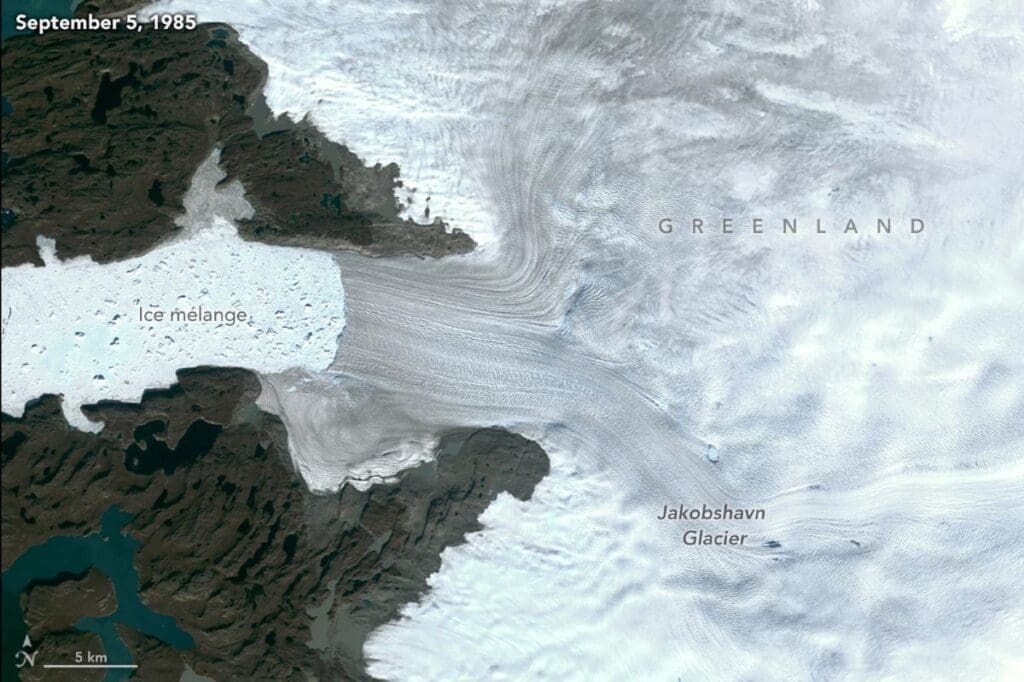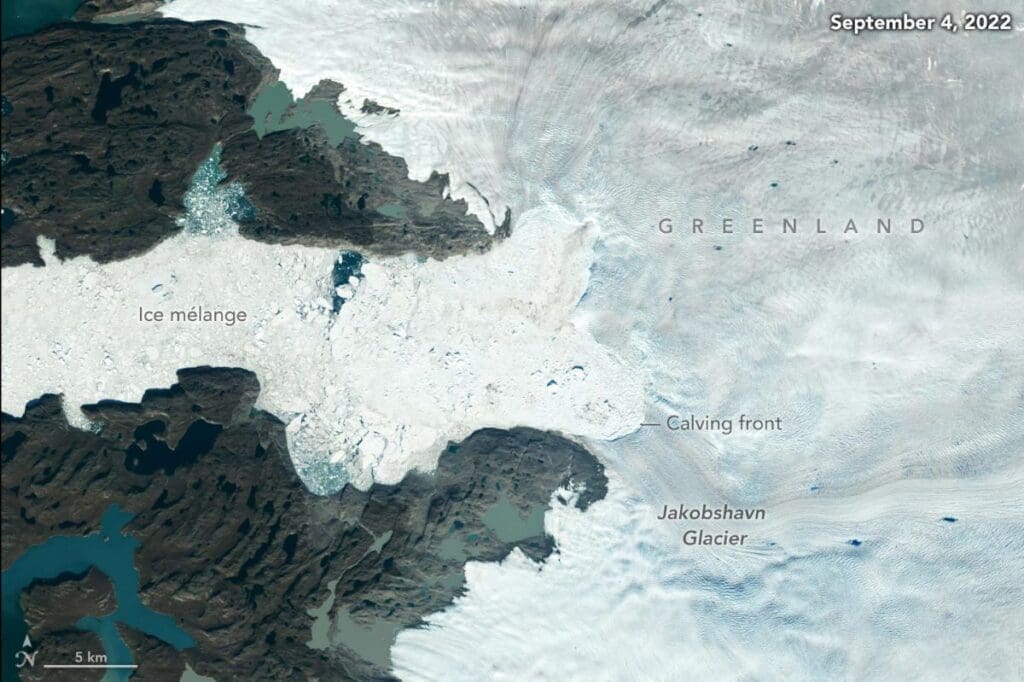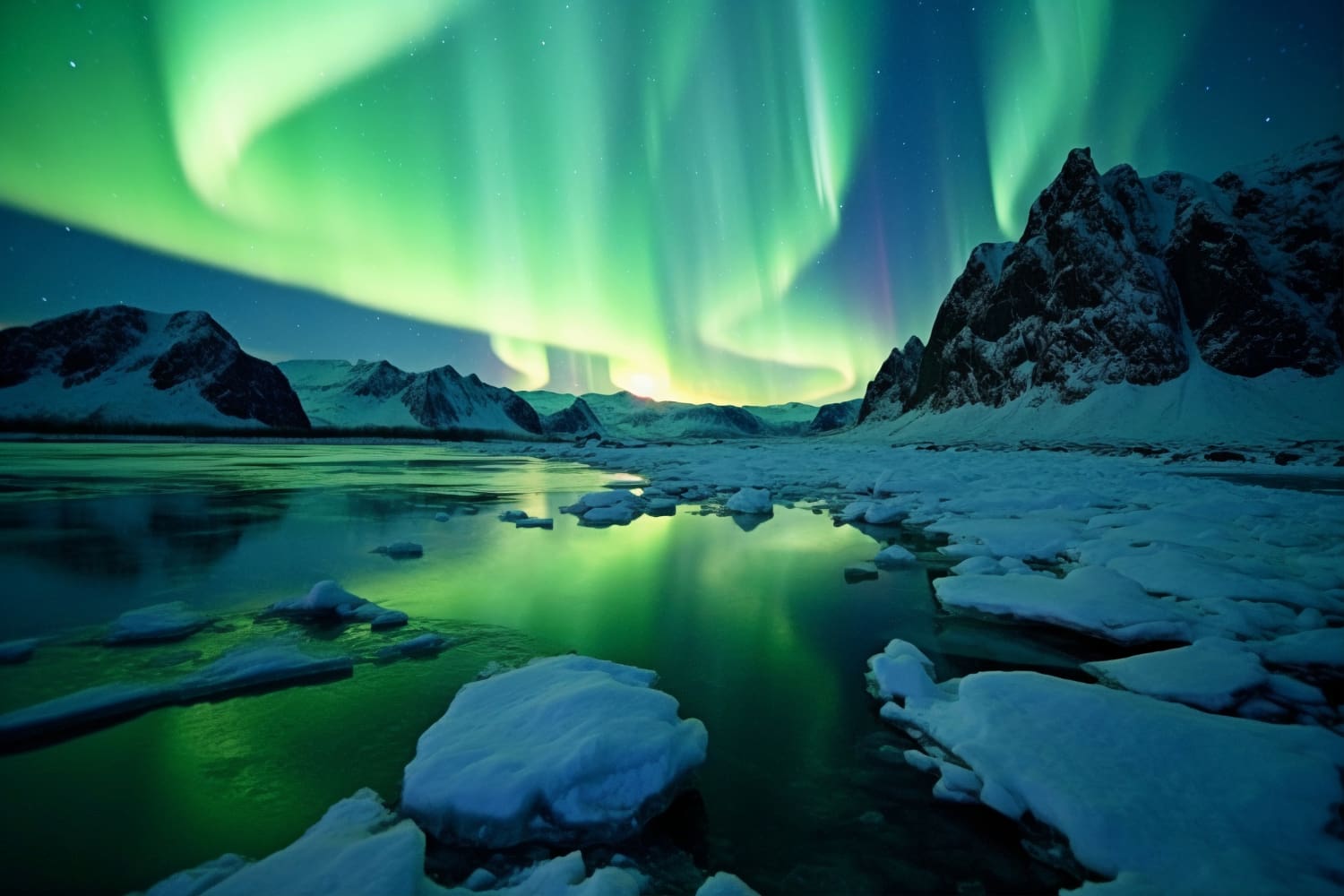A paradigm-shifting study published in the Nature journal on January 17, 2024, has laid bare the extent of Greenland’s ice loss, surpassing previous estimates and underscoring the urgency of understanding the intricate dynamics of glacial retreat. Led by Chad A. Greene, a glacier scientist at NASA’s Jet Propulsion Laboratory in Southern California, the research offers a sweeping analysis of satellite data from 1985 to 2022, providing insights into the evolving state of the Greenland Ice Sheet.
Scope and methodology
The study leveraged nearly a quarter million pieces of satellite data, meticulously tracking glacier positions across the entirety of the Greenland Ice Sheet. The research sought to provide a comprehensive view of the retreat around the edges of the ice sheet, highlighting the complexities of ice loss and its potential ramifications for global sea levels and ocean circulation.
Key findings
Unprecedented Ice Loss: The research unveils a startling revelation – Greenland has shed approximately one-fifth more ice mass than previously estimated over the past four decades. This accelerated loss is not only reshaping the landscape of the Greenland Ice Sheet but also contributes to an escalating rate of icebergs calving into the ocean.
Below Sea Level Loss: The majority of the ice loss is concentrated below sea level, particularly in fjords along Greenland’s periphery. While this phenomenon may not directly contribute to sea level rise, it acts as a catalyst, hastening the flow of ice from higher elevations into the ocean and potentially impacting global sea levels.
Impact on Sea Levels: Although the additional ice loss doesn’t have an immediate impact on sea levels, it introduces a substantial influx of freshwater into the ocean. Recent studies have raised concerns about changes in North Atlantic Ocean salinity, suggesting potential consequences for the Atlantic Meridional Overturning Circulation (AMOC), a critical component of the global oceanic conveyor belt system.

Glacial Retreat Patterns: The study delves into the retreat patterns of 207 glaciers, revealing that 179 of them experienced significant retreat since 1985. Interestingly, glaciers with the most significant seasonal fluctuations in ice front position exhibited the greatest overall retreat, indicating heightened sensitivity to warming conditions.

Glacier-Specific Data: The analysis identifies specific glaciers bearing the brunt of ice loss. Notably, Zachariae Isstrom in northeast Greenland leads the losses, shedding 176 billion tons of mass, followed by Jakobshavn Isbrae (97 billion tons) on the western coast and Humboldt Gletscher (96 billion tons) in the northwest.
Implications for climate change
These findings challenge previous assumptions about Greenland’s contribution to global sea level rise. Beyond the immediate impact on sea levels, the research underscores the importance of accounting for terminal glacier retreat in understanding the broader implications for ocean circulation. The potential weakening of the Atlantic Meridional Overturning Circulation could reverberate globally, affecting weather patterns and ecosystems.
This comprehensive analysis of Greenland’s glacial retreat serves as a wake-up call, urging a reevaluation of our understanding of polar ice dynamics in the face of climate change. As nations grapple with the imperative to address climate-related challenges, the study provides invaluable insights for policymakers and scientists alike, emphasizing the interconnectedness of ice sheet dynamics, sea levels, and the broader climate system. The urgency to mitigate climate change and its cascading effects on polar ice sheets is evident, as we navigate the path toward a sustainable and resilient future.
Journal Reference:
Greene, C.A., Gardner, A.S., Wood, M. et al. ‘Ubiquitous acceleration in Greenland Ice Sheet calving from 1985 to 2022’, Nature 625, 523–528 (2024). DOI: 10.1038/s41586-023-06863-2
Article Source: Nature
Featured image: Freepik (AI Gen.)




